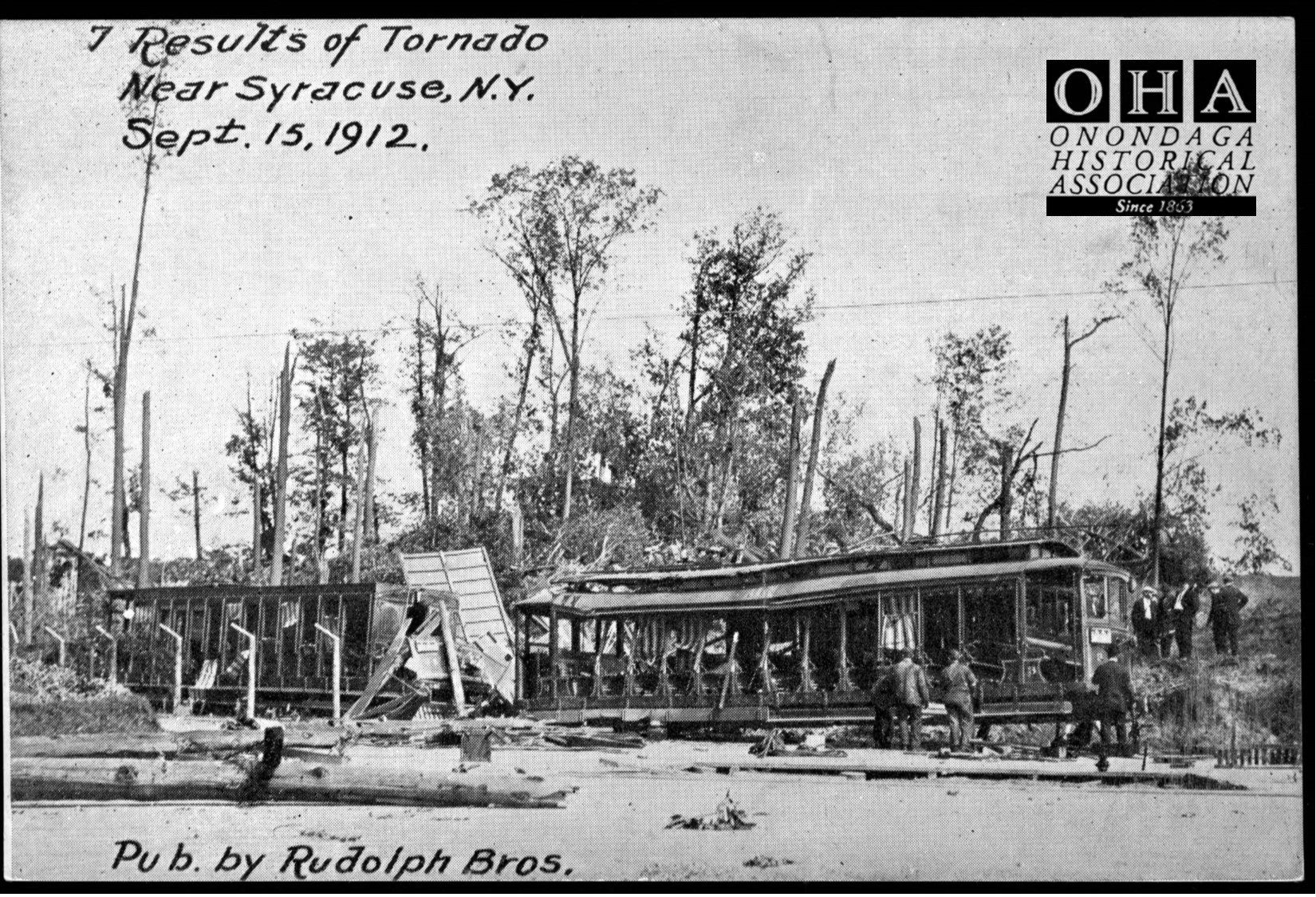
Just before 5:00 pm on Sunday, September 15, 1912, a tornado touched down at Long Branch Park in the Town of Salina, churning the earth and everything else along its destructive five-mile, eastward path toward Oneida Lake. Instead of cutting a clean swath from the park to the lake, the tornado’s damage was erratic. Five times it dropped earthward, causing significant damage each time. Three people were killed and over 30 people were injured. The twister’s heaviest wind lasted only ten minutes, but caused $500,000 in property damage (about $11 million today) toppling or uprooting farmhouses, barns, trees, crops, telephone poles, and vehicles.
The Lake Shore trolley cars waiting at the park station were destroyed. The tornado lifted one car from its tracks and threw it several feet before dropping it on its side. One eyewitness inside Long Branch recounted that “the wind, thunder, lightning, and rain were terrific. We could hear the trees cracking as the wind toppled them over, and it looked as though our time had come. Women screamed and fainted, and altogether it was a scene of terror such as I cannot describe.”
The twister’s force sounded like a locomotive thundering down the rails. Torrential rain filled houses and outbuildings that had lost their roofs. It hurled dishes out of a kitchen window, stripped wallpaper from a house, clanged a school house bell ripped from the school’s roof, and scattered trees, cattle, and building fragments that it had acquired in its enraged funnel.
Then, as quickly as the tornado arrived, it was gone. Frightened men, women, and children searched through debris for loved ones and cried for help. Terrified animals ran wild in the fields. Unaware officials were flabbergasted by the storm’s stealth, quickness, and massive devastation.
The next day thousands of spectators visited Long Branch Park to view the wreckage, watch the cleanup work, and collect souvenirs. Up to that time it was the only recorded tornado in Onondaga County. Even into the 1930s, ravages of the twister were still evident in Long Branch Park.
–Thomas Hunter, OHA’s Curator of Collections

